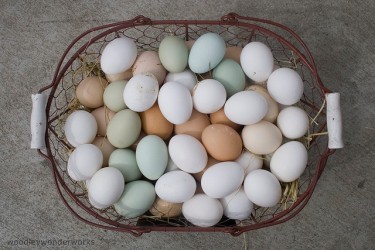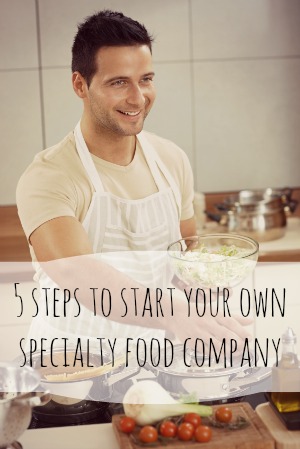Are you interested in starting a fast food business? Do you want to open a fast food restaurant but you don't know how to go about it? Do you need a sample fast food business plan template or feasibility
study report? Then I advice you read on.
Starting or opening a fast food business is challenging and difficult, but the experience can be rewarding if done correctly. Americans alone spent around $110 billion on fast food in the year 2000. Now with a rapidly growing population throughout the world, that figure is only bound to increase.
The fast food industry is highly competitive, with notable brand names like Drum stis, Chicken Republic, Mr Biggs, Tantalizer, Crunchies, Tasty Fried Chicken (TFC), Kentucky Fried Chicken (KFC), etc. It is also capital intensive and as well rewarding, so it is very essential to have a sound business strategy in place.
However, it will be best if you start a fast food business from home instead especially if you are aiming at having a restaurant of your own, but do not have enough resources. So if you are interested in starting a fast food business from home, then below is a sample business plan on how to go about it.
1. Your target market should be identified
Before ever investing a dime in starting a fast food business, you must think of who your target customers are and as well consider their different generational uniqueness and preferences. Try to understand the demographics of your potential customers and how they frequent fast food restaurants You can get such information by doing an online research or hiring a company that will provide a market research report for you.
• Make a research of fast food franchises in order to discover the
most suitable one for you.
• Get knowledge about the market demand in the location where you
want to open a fast food business.
2. Determine what type of fast food business you would like to operate
When it comes to a fast food business, there are many options and these include food truck business, ice cream truck business, fry fast food and burger restaurants, fish fast food restaurants, chicken fast food restaurants and sandwich fast food restaurants. It is left for you to either start your own fast food restaurants or purchasing a fast food franchise. A franchise is a nice option for those who wants the parent company to manage some of the marketing and operations. But bear in mind that there are royalty fees and up-front fees you will be required to pay the franchisor.
3. Write your business plan
The next step is to develop your business plan and strategy. When writing your plan, include a detailed description of your fast food business concept and target market; your market analysis, hiring strategy; pricing and menu options, employee training and financial projections.
4. Secure funds from investors or start with your money
A fast food business will never be up and running without some expenses like building rental or mortgage payments, supplies, food, employee salaries, insurance, equipments, marketing and advertising.
So you have to factor out how to raise the money to startup. If you can't personally finance the business, you can always take into consideration of other sources of funding like family and friends or government programs, etc.
5. Choose your location
When choosing a location for your business, you must consider some factors such as the volume of traffic in that area, local law and ordinances, customer accessibility, parking, lease terms, site history and sales projections.
Now for those that don't have the capital to start big, you can start small from home by using a good, ventilated section of your house. It does not necessarily mean that you will need to renovate your house to become a big fast food establishment like Taste Fried Chicken.
You can start by delivering your fast food to your neighbors and small business owners existing within your vicinity. You can also start delivering your products to young students and kids in your neighborhood. This is a logical step since it will not require a large startup capital, and your neighbors will surely love home delivery.
6. Design your fast food restaurant layout
You should take into account the amount it would cost you to design your restaurant, office and also the size of storage space you will be requiring. Carryout research or hire a professional design company to assist your drawing plans and create layouts for both the dinning and production areas for your business.
7. Get the understanding of safety and legal implications
You should not forget to consult a lawyer in this case, so that he will walk you through the legal processes for owning a fast food business.
8. Locate suppliers that will be sourcing your food and office supplies
You have to negotiate and get the best terms that is possible and most importantly, reach an agreement so that when you reach a certain level of sales, your rates will go down.
9. Buy the necessary fast food utensils
After earning some money from your delivery service, you can start investing on high quality fast food cooking utensils. A few of those utensils are:
1. Burger Equipment
2. Fryers
3. Bain Maries
4. Boiling Tops
5. Counter Fridges
6. Hot Dog Grills
7. Pizza Oven
10. Setting Up Your Diner
Subsequently, your delivery customers might increase in number. When that happens, deliveries can become such a hassle. Because of that, it is the right time to set up a simple diner. You can use your front yard, and put some beach parasols, tables, and chairs.
11. You should hire and train employees
You will be required to recruit and train managers and other employees and as well determine the play scale for all employees in your fast
food restaurant. Always take into consideration of things like employees training, benefits, bonuses and career paths for prospective
employees. For a start, your top picks as employees are your family members, and friends. However, in case they are unavailable, you can consider hiring college students.
12. Advertise your restaurant business
It is important that you advertise your service since nobody would ever know your business if you do not tell them. One of the few things you could do is to post some flyers around your neighbourhood. Or in case you have some time to burn, you could go around in your community to inform every person there about the service you offer.
It is also important that you outline strategies and develop a detailed marketing plan which you will be using to advertise your fast food business. Always consider marketing mediums such as television, print, radio and internet-based marketing. Immediately you have launched your marketing strategy, your fast food business is qualified for the grand opening.
13. Renovate or Relocate
The decisive moment comes when you already have attracted a large customer base. And together with that, you will need to decide whether you will need to renovate your house to become a legit fast food place, or to relocate your business. This decision is up to you.
At this stage, don't forget to get your business licensed because the government will definitely notice you and check to see if you are running your business legally. In addition, after your expansion, you can consider if you consider continuing your fast food business, or
changing it to a restaurant.









 grow from their inception into a strong brand name and then, (for the lucky few) become nationally renowned. This is one of the perks of our job: the joy in watching something real and strong grow from just a little seed.
grow from their inception into a strong brand name and then, (for the lucky few) become nationally renowned. This is one of the perks of our job: the joy in watching something real and strong grow from just a little seed.














